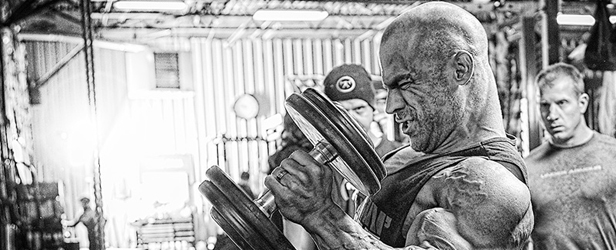
elitefts™ Sunday Edition
Good joints, not the kind you smoke, are vital for bodybuilding. Actually, healthy joints are vital for anything involving movement, but as a bodybuilder who wants to activate and grow muscle, they're particularly important. This article will delve into some of my personal experiences with joint pain and what I feel is most effective in preventing it.
As a disclaimer, I went to public school and graduated from the University of Washington with a degree in business. How does that qualify me in regards to providing advice for healthy joints? It doesn’t. My advice isn’t derived from formal education. It’s derived from twenty years of on-the-job training, hammering away at the iron in pursuit of a more muscular physique. This isn’t a doctorate dissertation. It’s my personal experience in the trenches as to what works and what doesn’t.
Training technique
I grew up under the Mentzer and Yates Heavy Duty mentality that was further fueled by the Ronnie Coleman (light weight, baby!) era. Lift heavy and, the next time that you train, lift heavier. This works for a while, but you eventually experience diminishing returns. By the time I hit thirty, I was wrapping every joint that I could get wraps on and they all still hurt.
I later learned that the following training techniques foster healthy joints:
- Stop all pressing movements short of lockout. Three-quarter lockouts are ideal.
- Slow the tempo of eccentric contractions. It requires less weight to stimulate muscle.
- Avoid movements that inflame joints. It sounds simple, but some bodybuilders are stubborn.
Training aids
Finding ways in which to remove weight in the danger zone of exercises not only reduces the chance for muscle tears but helps maintain healthy joints. I began using these training aids over the last couple years:
- Bands: Use them to make the weight more difficult during the concentric contraction or use a reverse band technique to remove the load while the muscle is in a stretched position.
- Chains: Similar to bands, these work great for unloading weight where the movement switches from eccentric to concentric and places more stress on the joints.
- Wraps and sleeves: I use these very sparingly, but they do help protect joints on those days when the call of lifting heavier weights gets the better of you.
- Elitefts™ Arctic Sports balm: A little of Arctic Sports balm on my elbows, knees, or lower back when they aren't feeling great goes a long way toward powering through a workout.
Recovery aids
I personally think tools and techniques that aid muscle recovery are also beneficial for joints due to a reduction in inflammation. Acute inflammation is actually beneficial and a natural occurrence following an assault on the iron, but chronic inflammation is something that you want to avoid because it can lead to all sorts of joint and vascular problems.
Here are recovery aids that I regularly use:
- Massage: This is a great relaxation and injury prevention tool that also facilitates blood flow and helps rid the body of waste products.
- Rumble roller: When you can't get a massage, this is a great alternative. I use it probably three or more times a week on my legs and back.
- Infrared sauna: Aside from urinating, sweating is one of the primary ways in which our body rids itself of toxins. I use this at least twice a week.
Supplementation
People talk all the time about glucosamine and chondroitin, but these supplements never did much of anything for me. The primary supplements that I use religiously and feel work really well are as follows:
- Curcumin (tumeric): This stuff is amazing in higher doses. I use curcumin by Biotest in the 3–4 grams per day range and it makes a world of difference.
- Krill oil: I take two grams a day. Look for the Neptune krill oil (NKO) kind.
- Fish oil: I take at least a tablespoon a day.
Nutrition
I’ve found that many people benefit from eliminating common allergens in their diet. Most people don’t wish to pay hundreds of dollars on a test to figure their food allergies out, but you can begin by eliminating the most common food allergens. I provided a list of both suggested food items and those to avoid.
- Suggested foods: Organic meats, wild caught fish, sauerkraut (a healthy gut lends itself to lower inflammation), Greek yogurt, olive oil, avocados, nuts (I prefer sprouted almonds and/or walnuts)
- Foods to avoid: Anything processed (especially snack foods and meats), wheat, soy, and for some, dairy.
Based on personal experience, the aforementioned information aided my joint health. As mentioned previously, I don’t have formal training on maintaining healthy joints, but these are a few things that have helped me over the years. I suggest giving some of them a try so that you can push the iron far into your golden years.









